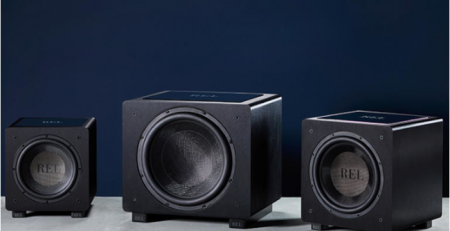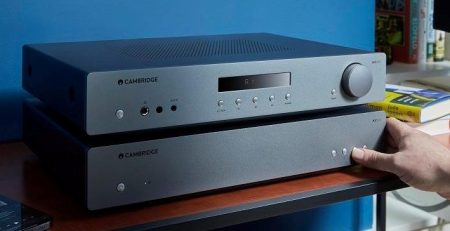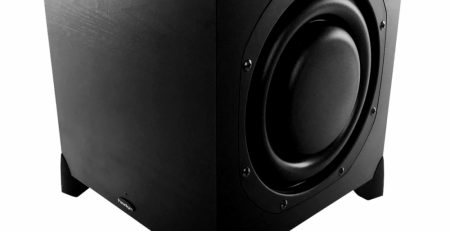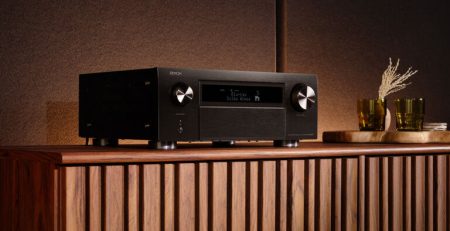The Impact of Speaker Placement on Sound Quality: An Eastwood HiFi Guide
Are your high-end speakers producing poor sound quality? Well, it may not always be the manufacturer’s fault, the incorrect placement and setup of your speakers will hugely influence their characteristics and capabilities so proper configuration is a must.
Sound behaves differently at varying frequencies, so you must position your speakers accurately to get your intended sound quality. Otherwise, you will end up with suboptimal sound quality, even if your speakers are from a quality brand like Martin Logan, KEF, SVS, or Monitor Audio.
Besides the nature of sound, the design and purpose of the speakers also play a major role in determining their ideal position. The best solution is to check the manufacturer’s provided guidelines for speaker placement.
However, if your speakers didn’t come with a manual, don’t stress—this comprehensive Eastwood HiFi guide is here to help. Let’s get into it.
Basics of Speaker Placement
Whether you’re a newbie audiophile or a seasoned one, learning the basics of speaker placement is the key to achieving your desired audio. There is no other way around it. Here is a breakdown of key terms and principles involved in the basics of speaker placement.
Key Terms of Speaker Placement
- Soundstage or Speaker Image: It is the imaginary three-dimensional stage that speakers create around the instruments and vocals in the playback. Soundstage allows listeners to sense the width, depth, and height of different elements in the recordings, which helps them identify the location of each sound within the audio mix.
- Imaging: It is how well speakers place instruments and vocals within the soundstage.
- Bass Response: It refers to a speaker’s ability to reproduce low-frequency sounds, typically below 250 Hz. Good bass response offers a more balanced and immersive listening experience than low responses.
General Principles of Speaker Placement
- Distance from Walls: Always position speakers a few feet away from walls to avoid excessive bass buildup due to gains in amplitude caused by the reflections.
- Symmetrical Arrangement: For HiFi setups, speakers should be placed symmetrically to the listening position to ensure a balanced soundstage and imaging. Ideally, the distance between two speakers and the distance from one speaker to the listener should be equal.
- Toe-in: Angling the speakers slightly towards the listening position (toe-in) can produce better imaging and soundstage.
- Listening Position: The best position for the listener is at the apex of an equilateral triangle with the two speakers. This listening position ensures a well-defined soundstage and imaging.
- Room Acoustics: Hard surfaces can cause reflections and deteriorate sound quality. Acoustic treatments like rugs, curtains, or panels can minimise this effect allowing for a more accurate and focussed sound.
- Speaker Height: The ideal speaker height is the listener’s ear level when seated. Speaker stands or adjustable mounts help achieve this height.
Impact of Room Acoustics
As discussed, room acoustics can significantly impact the sound quality of your speakers. Let’s discuss its mechanism in detail and some tips for managing acoustics in difficult spaces:
Room Size
The distance between the walls in small rooms is less, making the sound waves bounce off walls more frequently. This leads to early reflections and comb filtering effects—both of which result in muddy, unclear, and uneven sound and bass response.
Comparatively, larger rooms allow sound waves to travel for greater distances before getting bounced off by walls. This results in a more focussed and immersive performance, but it may also compromise the detail and definition of the sound.
Room Shape
Rectangular rooms often produce strong axial modes, which make sound waves bounce back and forth between the walls. You may observe uneven frequency response if you stand at certain listening positions.
Irregular rooms also cause trouble achieving balanced sound reproduction, primarily because of complex reflections and standing waves. Like rectangular rooms, you may face excessive bass buildup, or flutter echoes in certain areas of the room.
Tips To Manage Acoustics
- Placing absorptive materials like acoustic panels, bass traps, and thick curtains around your room and HiFi system can help absorb excess sound energy, thereby reducing reflections.
- Diffusers scatter sound waves in different directions to break reflections and create even sound quality.
- Properly positioning furniture can also minimise sound reflections. For instance, a fully filled bookshelf can act as a diffuser, and sofas and carpets can be excellent absorbents.
- Equalisers and other digital room correction software can adjust the frequency response by applying suitable corrective filters.
Specific Placement Guidelines for Different Speaker Types
Let’s discuss specific placement guidelines for different high-end speakers from Martin Logan, Monitor Audio, KEF, SVS, and more.
Floorstanding Speakers
If you’re a floorstanding speaker fan, you may be familiar with Martin Logan Motion F10 or Monitor Audio Gold 300 5G floorstanding speakers. To place these large speakers correctly, follow the below placement guidelines:
- Positioning: Place them a few feet away from walls for minimum bass reflections and optimal sound quality.
- Toe-in: Angle the speakers slightly towards the listening position to focus its soundstage towards the centre
- Listening Height: When seated, ideally the tweeters of the speakers should be at your ear level so suitable furniture should be selected to allow for the optimum experience. This is more easily configured with bookshelf speakers as their speaker stands can be used to achieve the correct speaker height.
Bookshelf Speakers
KEF has a wide range of compact bookshelf speakers, including R3 Meta and LSX II Wireless Powered Hi-Fi Bookshelf Speakers. Here are the placement guidelines for these speakers:
- Positioning: Place them a few feet away from the wall on sturdy stands or shelves for better stability. Gradually push them closer to the rear wall and test to see if bass weight and quality improves or worsens. Repeat until you have the perfect balance of bass output without sacrificing accuracy.
- Isolation: Use speaker isolation pads or spikes to reduce vibrations from stands or shelves.
- Listening Height: Like floorstanding speakers, position bookshelf speakers at your ear level when seated. This is simpler with smaller speakers as stands can more easily allow for any height adjustment needed.
Subwoofers
Subwoofers reproduce low-frequency sounds, typically below 120 Hz, to avoid localisation effects. Whether you have SVS SB-1000 Sealed Subwoofer or PC-2000 Pro Ported Cylinder Subwoofer, here are its ideal placement guidelines:
- Positioning: Subwoofers can be placed along walls, corners, and near the front speakers.
- Subwoofer Crawl: Perform the “subwoofer crawl,” in which the subwoofer is placed in the main listening seat whilst you crawl around the perimeter of the room to find the area with balanced bass and even sound quality. Once the best spots are identified, moving the subwoofer into this position will provide the exact same bass performance in the main seat.
- Phase Adjustment: Adjust the subwoofer’s phase control to ensure it’s properly integrated with the main speakers.
Speaker Placement for Home Theatre Systems
Speaker placement in a home theatre system requires special considerations, especially for surround sound setups. Here’s how to arrange speakers in such setups like a pro:
- Front Left and Right Speakers: Place these speakers at your ear level (when seated) on either side of your projection screen or TV. They set a strong foundation for the front soundstage. Because the scale and width of soundstage will be determined here it is important to try and get a decent spread between your front channels. Remember the aforementioned equilateral triangle.
- Center Channel Speaker: Position the centre channel speaker at the same height as the front left and right speakers, or as close as you can get. Favour placement below the screen or behind an acoustically transparent projector screen if applicable. Avoid placing the centre speaker above your projection screen or TV where possible.
- Rear Surround Speakers: Place them behind the main listening area, facing towards the seating position. The ideal placement is at your ear level (when seated) or slightly above.
- Subwoofer: The aforementioned “Subwoofer Crawl” should be used to identify the optimum position of the subwoofer. As a rough guide you can place it into one of the front corners but in many instances the subwoofer crawl can help you further improve the subwoofer’s performance through better placement.
Speaker Placement Common Mistakes and Misconceptions
Many audiophiles make mistakes when placing their newly bought speakers, but you should know them. Here are some common ones:
- Placing speakers too close to walls, resulting in bass buildup and unnecessary reflections.
- Ignoring room acoustics, leading to uneven frequency response and poor sound quality.
- Positioning the speakers at the wrong listening height, producing poor imaging and soundstage presentation.
- Putting subwoofers in suboptimal locations, resulting in uneven bass response and localisation effects.
- Positioning speakers asymmetrically or insufficient toe-in adjustment, leading to imbalanced soundstage and imaging.
Conclusion
Proper speaker placement offers even sound quality, a balanced soundstage, and a smooth flat bass response. To make the most of your efforts and money, consider your room’s acoustics, speaker’s model and purpose, and some effective tips to minimise inaccuracies.
Still unsure about your speaker’s proper placement? Connect with Eastwood HiFi’s experts to get personalised recommendations for your speaker model.











